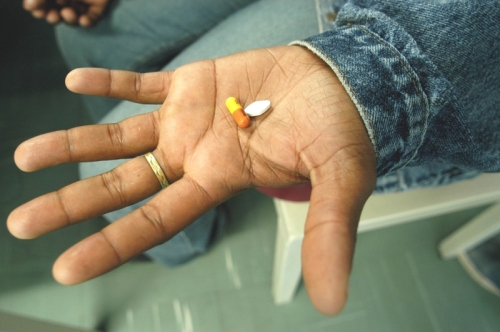
Children as young as four ask where babies come from. Photograph: Veer/Getty Images
A year-long campaign is calling for good quality lessons that explain more than just the biology of puberty and reproduction.
Sex education has mattered to a lot of people for a long time. This year, the Sex Education Forum hosted by the National Children’s Bureau, celebrates 25 years since its launch. SEF was born with eight members, including three religious organisations. Journalists were sceptical that we would agree on much and certainly not about teaching topics such as homosexuality and abortion. Teachers, however, responded enthusiastically, expressing their feelings of isolation and frustration at the lack of support for their work.
Over the years people have argued that sex education must be more than just the biology of puberty and reproduction, and must look at the real life context too – ie relationships. So SEF and others have called for compulsory sex and relationships education (SRE) to be taught to all children and young people from primary schools upwards.
One young person told us sex education matters because “without it, we’d still be giggling uncomfortably whenever anything to do with sex is mentioned”. The word “sex” seems to be a problem, but it shouldn’t be. Sexuality is an intrinsic part of being human and sexual development is a normal part of growing up. Some primary schools call the topic “growing up” and this can be more meaningful to young children and more comfortable for adults. It doesn’t matter what it is called as long as it is happening, and by “it” we mean learning about family, friendships, staying safe, healthy relationships, puberty, sexual health and more.
Sex education matters in primary schools because four-year-olds ask where babies come from, five-year-olds browse the internet and six-year-olds want to be popular with their friends. Sex education matters at home because children want their parents to be the first people to talk to them about growing up, sex and relationships. Yet many parents say they lack confidence to answer their children’s questions frankly. Sex education matters in secondary schools especially because this is a time when young people come under new pressures from their peers and are reaching for more independence and considering their own views on love, romance and what is acceptable or unacceptable for them.
Today, the consensus of support for SRE is bigger and broader than ever before. SEF represents diverse voices from more than 75 religious, family, youth, disability, health and education organisations. All our member organisations believe sex education matters. For example, Kids, a charity working with young disabled people, joined SEF because clients said their experiences of SRE were “too late” and they were “talked at rather than listened to”.
Around 20,000 young people took the time to answer a UK youth parliament survey about SRE; more than a third said their SRE was “bad” or “very bad”. That was in 2008 and young people are still saying the same today.
There are signs that SRE is improving but progress is too slow and too patchy. In some primary schools the only SRE is one lesson about puberty taught in the summer term before moving to secondary school and sometimes that will be for the girls only. In other areas primary and secondary schools have worked together to plan a comprehensive curriculum that grows with the child and builds vocabulary and knowledge at an appropriate pace.
It is encouraging that MPs from all parties attended a recent Westminster Hall debate to talk about personal, social, health and economic (PSHE) education with loud support for making relationships education part of every child’s learning. Ann Coffey MP said “the knowledge that PSHE gives children will help prevent further Rochdale and Jimmy Savile scandals” and she is right. The evidence shows that young people who have had comprehensive SRE that starts early and is taught by trained educators are more likely to have sex for the first time at an older age, with a partner of a similar age and use contraception.
To highlight the consensus that sex education matters and to press for the political support needed to get good quality SRE in all classrooms, we are running 12 months of online discussion and debate.
STAY UPDATED







